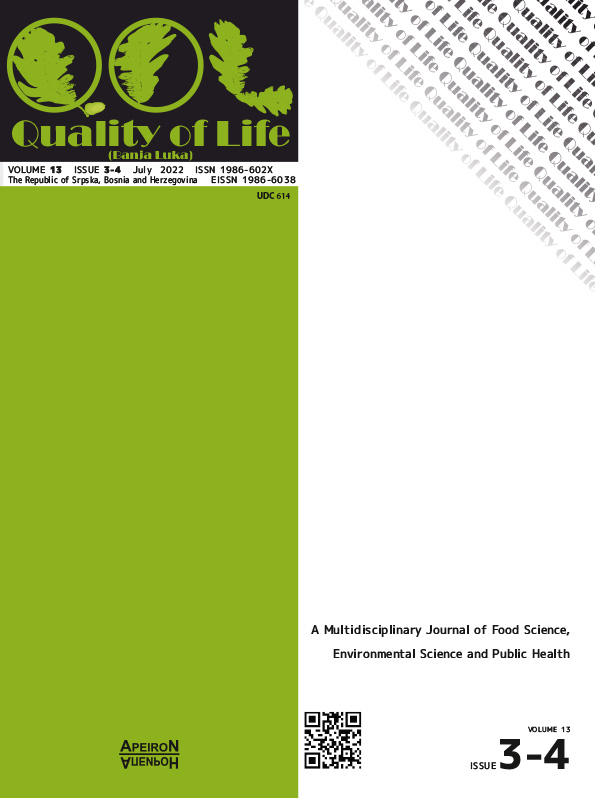Comparison of Physical and Chemical Composition of Leachate from Three Municipal Waste Landfills: Sarajevo, Zenica and Tuzla (Bosnia and Herzegovina) Case Study
DOI:
https://doi.org/10.7251/QOL2203089SAbstract
In Bosnia and Herzegovina (BiH), waste management is still based on the preventive disposal of waste in landfills, of which most landfills are unregulated. According to World Bank reports, BiH must deal with the improvement of waste disposal to protect the environment. The aim of this study was to review the physical and chemical composition of leachate from municipal waste landfills. The following standard physicochemical methods were used: pH, total suspended solids (TSS), Biological Oxygen Demand (BOD5), Chemical Oxygen Demand (COD), Total nitrogen (TN), total phosphorus (TP), chlorides, and sulphates. The leachate quality test was conducted over three years at landfills in Sarajevo, Zenica and Tuzla, Bosnia and Herzegovina (BiH). Based on the processed data (from the processed tables), and in comparison with the expected values of pollutants in landfills over the period of 10 years, we can conclude the following: (1) Landfill “Smiljevići” Sarajevo, in the observed period of 3 years, has a higher average value than expected; (2) Landfill “Desetina” Tuzla, in the observed period of 3 years, has a higher average value than expected; (3) Landfill “Mošćanica” Zenica, in the observed period of 3 years, has a higher average value than expected.
